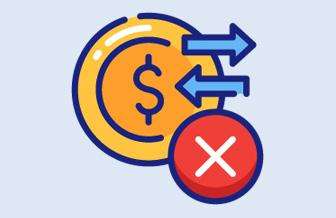First Hawaiian Bank Small Business Growth Checklist
15 min read
Posted on Aug 30, 2021

Step 1. Focus on existing customers
Before you look further ahead and experiment with new products, or try to find new customers, it’s sensible business practice to try and grow with the customers you already have first.
Target your best customers with offers
Identify the customers who generate the most profit for your business or who have the most potential for additional sales. Actively engage with these customers to gain more sales. It’s common knowledge that often 80% of your sales will come from 20% of your customers. Go back and contact them.
Research what else you can sell
Conduct online surveys or ask customers directly to discover what other products or services they might be interested in. There could be possibilities to joint venture or resell complementary businesses and take a margin.
Investigate creating a customer loyalty program
Building a loyalty program with points or loyalty cards is a great way to encourage more frequent purchases and track your customers’ buying habits with the data you collect. This can also help identify sales opportunities.
Create a customer database to target offers
Collecting customer emails or addresses enables you to contact them with special offers, new items or useful information.
Train staff on ways to improve sales conversions
Make sure your business has friendly, helpful staff that is well trained to take advantage of converting inquiries into sales. Run in-house sales rallies or employ a sales consultant to help identify how you can encourage staff to sell more.
Offer incentives for your staff to sell more
Help your staff cross-sell or up-sell to existing customers by offering them incentives, which could be based on selling certain products or services, or a monthly sales target.
Build a community through social media
Start a Facebook, LinkedIn or Twitter campaign (whichever is most relevant to your business) and talk about your business and customers to increase the profile of your business and encourage additional purchases.
Identify any cross-sell opportunities
List the products or services your customers have previously bought and then match complementary items that you could sell to them. Contact them with offers. Always encourage customers to consider buying a higher net margin product or service.
Review your business plan
Go over your business plan to evaluate and update anything that’s recently changed. Check that you’re still on track for your growth goals and make any necessary adjustments.
Step 2. Find new customers (within the current market)
Once you’ve exhausted your existing client base, find new customers to target. It’s easier if you find similar customer segments that you already sell to, as they’ll be more likely to buy if they have similar characteristics.
Use direct marketing that gets results
If you can identify your customers (from a business list or directory) then consider investing more of your marketing budget into approaching them direct, as opposed to general advertising. Measure the response rates on email advertising, direct mail, or online and focus on what generates leads.
Find ways to generate word of mouth
Build up positive word of mouth referrals by getting testimonials from customers, encouraging regulars to refer their friends, family or business colleagues to your business, speak at events, and network inside chambers or business associations.
Create exclusive offers
Create an introductory offer for new customers only, to gain future customers that will buy again on a regular basis.
Increase your profile through online directories
To increase your online presence, list your business on the most popular online directories. Alternatively, use these resources to uncover potential new customers (especially through industry directories).
Increase web traffic by improving your search engine optimization (SEO)
SEO will help increase your website’s traffic leading to a growth in your customer base. Spend some time determining your site’s keywords and keyword phrases so it attracts the right traffic for your business. Google have a useful page about how Google search works.
Purchase search keywords to improve your online exposure
Consider paying for search engine marketing (like Adwords) so that when customers search for your business products your web address is more likely to come up than others. Find out how keywords work from Google.
Use Instagram to display your business
Instagram allows you to visually tell the story of your business and its offerings through images. When potential customers like your product or service images (which can be linked to your other social media accounts), you could get an avalanche of views.
Create regular blogs
Keep your content fresh and updated by writing regular blogs (informal content posted online in a chronological order) about your business, your people, and successful case studies. Regular blog content can be important for increasing your search traffic and driving people to your website.
Run demonstrations or workshops
These are a great way to showcase your business to existing or new customers. Many businesses will run free ‘education’ sessions or workshops to existing and new customers to not only offer value and to up-skill, but as a lead generation tactic.
Network by joining business associations
Networking with like-minded business individuals is crucial to managing the right business contacts in your industry. Uncover potential customers by either attending industry events or using the directory of government and business associations to find member contact details in order to contact them directly.
Create a targeted marketing plan
Outline a specific marketing strategy that’s aimed at new customer segments. Then develop a precise advertising plan to build awareness and encourage purchases.
Use Facebook and LinkedIn to grow your connections
Once you’ve connected with your customers on Facebook or LinkedIn, find people in their networks who are interested in your offerings. Find out about how to market on Facebook.
Create a YouTube channel to increase your profile
If you want to get your goods or services out there in front of a worldwide audience, think about creating a YouTube channel for your business. This is a great way to demonstrate products or share tips with your customers.
Step 3. Find new markets (with existing products or services)
Wider than finding new customers in your region, are new customers or new markets you haven’t thought of in the past.
Exhibit at trade events or conferences
Build connections, demonstrate new products and develop stronger relationships with new markets by presenting your business at trade shows.
Make your product available for purchase online
If you’re not already selling your goods or services online, think about changing your business model to offer online purchasing which widens your customer base worldwide.
Investigate opening in a new location
Research the feasibility of successfully opening a new store, office or branch.
License or contract out
Consider if your product or service could be licensed and delivered by another business, where you’re paid a license fee or royalty. It could be an effective method to enter a new market and reduce the risk.
Bid for government contracts to secure long-term sales
Look for new markets that you’re previously dismissed. If your products or services are suitable for government agencies, health, the military or larger corporates that release tenders for work, you might be able to find a totally new market you hadn’t considered before.
Investigate wholesaling and retailing
If you’re a wholesaler, consider opening a retail outlet. Or if you only sell through retail channels, investigate entering the wholesale industry. Seek to move up or down the supply chain.
Research buying a business in a different market
Identify if you can enter a new segment by buying a business that already exists in a new region. You will inherit their customers and market position.
Hire sales reps
Hire sales reps in other regions to help your business branch out into different markets. If they’re only on commission, it’s a results-driven tactic.
Export
Develop an export plan to identify the feasibility of exporting your products or services.
Step 4. Develop new products or services (to open new markets)
After you’ve sold more to existing customers, found new customers as well as new markets, it’s time to see if you need to evaluate new products and services to grow.
Conduct customer research to identify new ideas
Ask your customers about what new products or services they would like to see added to your range. Brainstorm ideas with your staff, along with which new markets to target.
Consult thought leaders for specialized advice and expertise
Look to your (or a similar) industry for thought leaders who are excelling and can provide sound advice for the direction of your product or service development. Join industry blogs, e-newsletter lists, and any specialist industry discussions that may spark a new product or idea.
Attend trade shows and exhibitions
Many new ideas get demonstrated at industry events, both locally and outside the US. At times just taking time out can help focus your thinking on what you want to do next.
Attend conferences
Search relevant conferences to attend to up-skill or learn more about the business. Even better, see if you can get to speak at an industry event (it’s great for credibility).
License other products
Consider licensing another business’s products or services to extend your product or service range. It’s especially effective if they’re complementary to your own offerings, and it saves you the expense of development and deployment.
Look to team up with other businesses offering different products
Keep an eye on other successful businesses within your industry, or those targeting markets that you’re interested in, and look at how to develop a strategic alliance.
Step 5. Improve profit
Finally, growth isn’t always about growing sales. If you want to grow your profit, you may sometimes be better at reducing sales and focusing on what drives profitability.
Re-assess your product mix
Review all your products and services and cut any that are poorly performing or have low margins. It’s often not worth the energy to support.
Investigate ways to improve your output
Improve your output to deliver your products or services faster. Add staff, upgrade to the latest equipment, or change software; try anything to speed up production.
Negotiate prices to improve your margin
It sounds obvious, but whichever way you choose to increase prices, it all goes straight to your bottom line. Consider the impact on demand if you have price sensitive customers.
Identify what overhead expenses you can lower
Audit all your expenses to see what can be lowered without affecting your business operation. Re-negotiate with suppliers and reassess any subscription services or set pricing plans.
Build a process to collect money owed to you faster
Take a close look at your debtors to establish which ones need extra motivation to pay you sooner. Consider changing your policy towards new debtors by tightening payment terms or adding a discount for quick payers. Make sure you have online banking as an option.
Lower energy use
Look at each area of your business separately and come up with ways to reduce energy use.
Reduce operating waste
Identify how to produce more efficiently to reduce left over materials, which will lower your cost of goods sold.
Automate processes to save time
Look at current processes you could change to save you time or money, from manual systems to automatic to free up time for more important tasks.
Online and Local Resources
The U.S. Small Business Administration (SBA)
The SBA is a federal agency fully dedicated to small business and provides counseling, capital, and contracting expertise. It is also the nation’s only go-to resource and voice for small businesses. To learn about their services and SBA-backed business loans, please visit https://www.sba.gov.
To contact the Hawaii District Office or to see what events are available locally, please visit https://www.sba.gov/offices/district/hi/honolulu
Hawaii Small Business Development Center (SBDC)
The Hawai‘i Small Business Development Center established in 1990, provides professional business advice, research and training to business owners and new entrepreneurs in order to promote growth, innovation, productivity and management improvement. For more information about their services or for a no-cost consultation, please visit https://hisbdc.org
SCORE Hawaii
SCORE Hawaii is a volunteer, non-profit organization, dedicated to helping small businesses get off the ground, grow and achieve their goals through education and mentorship. To find a mentor or to attend a workshop, please visit https://hawaii.score.org
Chamber of Commerce Hawaii
The Chamber of Commerce Hawaii is an advocate for businesses in Hawaii and works on the behalf of its members to help the local business community thrive. It’s a great way to connect with other businesses and take advantage of other resources and events that the Chamber offers. For more information, please visit https://cochawaii.org








